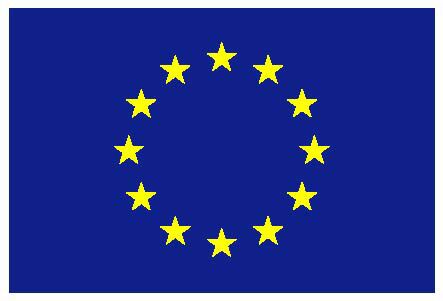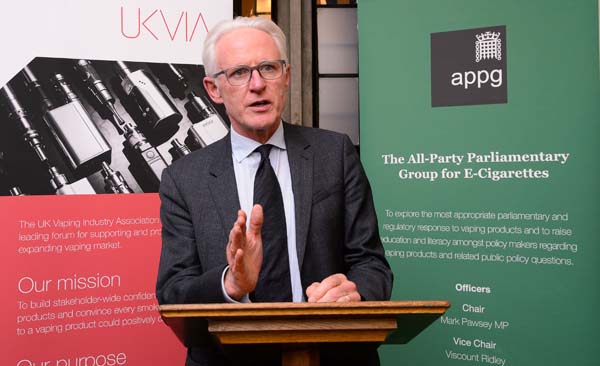Japan Tobacco Inc. said today that it had achieved, three years ahead of schedule the greenhouse gas (GHG) emissions reduction-target as set out in 2014 in the JT group Long-Term Environment Plan.
‘JT has continuously made progress towards the group’s target of reducing absolute GHG emissions … by 20 percent between 2009 and 2020 as part of its commitment to cut down its contribution to climate change,’ JT said in a note posted on its website.
‘In 2017, JT … exceeded this target by reducing its annual GHG emissions to 694 thousand tonnes compared to 880 thousand tonnes in 2009 – a 21.2 percent reduction.’
JT added that its efforts across the group had contributed to a decrease of GHG emissions on a global scale, while market contraction in the Japanese domestic tobacco business had contributed to the reduction. These outcomes had been achieved despite challenges linked to expanding operations in emerging markets and the restructuring of its manufacturing footprint in Europe.
JT said its efforts to achieve its 2020 emissions target included:
・ ‘Aligning our environmental management systems with relevant international standards ISO 14001 and ISO 50001 coupled with our JT Green System, a simplified environmental management system, developed for our smaller and less complex operations in Japan.
・ ‘Implementing the energy saving protocol with broad coverage from the manufacturing process to the office environment.
・ ‘Increasing the proportion of renewable energy use and reducing energy consumption across all operations.’
JT said it would ‘continue to develop its Long-Term Environment Plan including revised emission targets in line with science-based approaches, while taking into account the Paris Agreement on climate change’.
Category: Harm Reduction

Fast-changing climate at JT
NCD strategy proposed
Growing evidence from the US and other countries suggests that less-harmful products, such as smokeless tobacco, heat-not-burn devices, and electronic cigarettes, are viable alternatives to combustible cigarettes, according to a comment made by The Heartland Institute to the World Health Organization’s Independent High-level Commission on non-communicable diseases (NCDs).
The comment, signed by Lindsey Stroud, the Institute’s state government relations manager, said that these products were far more effective smoking-cessation tools than were those provided by the US’ current system of taxation and regulation, which had been remarkably ineffective in helping smokers quit.
‘We believe products such as smokeless tobacco, heat-not-burn, and electronic cigarettes have significant potential in aiding the WHO in its mission to eradicate NCDs,’ Stroud said. ‘As the evidence for their potential as effective cessation tools continues to grow, public health agencies should focus on policies that promote their use. Not only should these products be regulated differently than traditional cigarettes, public health groups should inform the public of their health potential and use these tools to combat smoking.
‘The Heartland Institute recommends the WHO:- ‘Assist nation-states with the creation and oversight of tobacco-control programs that promote the use of less-harmful products for cessation aids. Significant health gains will be lost without the promotion of these products, as there is ample evidence indicating they are some of the most effective cessation tools.
- ‘Governments should promote policies that encourage the use of less-harmful alternatives to cigarettes, rather than creating regulatory hurdles that prevent smokers from using these products.
- ‘WHO should encourage governments to continue working with the private sector to find free-market alternatives to combustible tobacco cigarettes.’

Vaping in the dark
Adults in Canada will soon have easier access to electronic cigarettes and vaping supplies — and be exposed to more advertisements promoting them — now that the federal Liberal government has passed legislation formally legalizing and regulating the practice of vaping, according to a Canadian Press story.
Once the Tobacco and Vaping Products Act receives royal assent in the coming days, it will prohibit the sale of vape products to minors, ban flavors aimed at young people and prohibit marketing that features testimonials, health claims or lifestyle themes.
At the same time, it will allow the legal manufacture, import and sale of vaping products both with and without nicotine, Health Canada said yesterday.
Other provisions will come into force 180 days after the bill becomes law to give manufacturers and importers time to comply.
Manufacturers that want to market their products with therapeutic claims, such as for smoking cessation, will still require Health Canada’s blessing before their products can be imported, advertised or sold in Canada.
Some experts welcomed the vaping regulations, saying they give legitimacy to something that could prove a boon for smokers who are trying to quit. Others fear the restrictions could keep those very same people from exploring vaping’s potential as a less-harmful alternative to smoking.
Where they agree, however, is that Canada continues to lack sufficient research into vaping and its potential effects.
The law essentially treated vaping like smoking, with similar regulations, said David Sweanor, an adjunct professor at the University of Ottawa’s Centre for Health Law, Policy and Ethics.
It prevented companies that made non-combustible products from informing smokers about significantly less hazardous options, and failed adequately to distinguish between the risks of using combustible cigarettes, e-cigarettes and other alternatives.
But Canadian Medical Association president Dr. Laurent Marcoux welcomed the legislation for its restrictions on promoting and advertising vape products, and said it was still too soon to embrace vaping as a potential stop-smoking aid
Looking beyond TPD2
There is no evidence that, one year after its full implementation in EU member states, the revised Tobacco Products Directive (TPD2) has reduced smoking rates, according to the smokers’ campaign group Forest EU.
TPD2 measures were said to have included an immediate ban on packs containing fewer than 20 cigarettes, a ban on flavored cigarettes (except menthol, which will be banned in 2020) and severe restrictions on the ability of smokers to access e-cigarettes.
TPD2 also increased the size of health warnings to 65 per cent of the front and back of every pack of cigarettes, with additional warnings on the top of the pack.
“The regulations are excessive, even by the European Commission’s standards,” said
Guillaume Périgois, director of Forest EU. “Smokers are being treated as second class citizens in a disgraceful attempt to denormalize both the product and their habit.
“Larger pictorial warnings are problematic since the Commission itself is now on record having called into question the proportionality of larger health warnings in delivering public health gains. If they are clearly visible, smaller warnings are just as effective as larger warnings in the eyes of the consumer.”
Calling for the Commission to explore alternative models of achieving public health gains that didn’t ostracize smokers, Périgois said the Commission needed to look at new approaches, for instance supporting member states in the provision of education programs or in providing a proper framework in which smokers could explore the growing vaping sector.
Call for e-cig standards
The EU should rethink its ban on tobacco-products advertising because consumers need more information about how electronic cigarettes are much less harmful than are combustible cigarettes, and how the former could help them quit the latter, according to an opinion piece in the Parliament Magazine by the MEP Laima Andrikienė, who is a member of the EU Parliament’s international trade committee.
The Parliament Magazine has run a series of opinion pieces written by people advocating the imposition of e-cigarette standards, and much of Andrikienė’s piece was about the need for such standards.
She said that thousands of counterfeit products entered the EU market without any safety checks and in violation of the EU’s trade rules. These included all kinds of products, from toys, electrical devices, medicines, to cosmetics and tobacco.
Tobacco producers, she said, faced significant problems regarding the illegal trade. Novel tobacco products and e-cigarettes differed from conventional tobacco products in many ways, and there were many new products available on the market.
‘In general, a large variety of similar products is a good thing for consumers, but it is important to know if regulators are prepared for this level of complexity,’ she said. ‘What we know for sure is that there is no compliance structure in place at EU level.’
Andrikienė said that protecting consumers and ensuring products were safe – particularly those brought in from third countries – remained problematic and required urgent attention at EU level.
Safety started with standards, she said, and the European committee for standardisation was working on the issue. However, the process of standardisation was slow and further efforts by all EU member states were needed.
Peru increasing taxes
Peru’s government has increased excise taxes on cigarettes, sugary drinks, alcohol and polluting cars in a bid to tackle public health problems linked to obesity and cancer, while shoring up public resources, according to a Reuters report.
The finance ministry said the tax on cigarettes would rise to 0.27 sol ($0.08) from 0.18 sol each.
The National Society of Industries, a manufacturing association, warned the tax increases would lead to more contraband and pirated goods.
But the government of President Martin Vizcarra, who took office in March, promised to be vigilant in the face of attempts to evade the new taxes.
Addressing the impacts of non-communicable diseases associated with smoking, drinking, obesity and pollution each year cost Peru $24 billion, or about 11 percent of GDP, the finance ministry said, citing a study from Harvard University.
Government spending on health care in Peru was about 3.7 percent of GDP, the ministry added.
Vizcarra’s government said also that it would eliminate some tax exemptions following three straight years of declines in tax revenues caused by a slowdown in economic growth.
Promoting innovation
The European Union needs to promote and protect innovation, research and development, according to MEP Fulvio Martusciello, who is a member of Parliament’s economic and monetary affairs committee.
Writing an opinion piece in the Parliament Magazine, Martusciello said that such a policy would not only send the appropriate positive signals to investors and provide the business community with a dependable space to develop successfully, it would also have a positive impact on high quality employment creation and on consumers’ satisfaction.
‘Vaping products embed significant research and development,’ he said. ‘These are highly innovative products and represent a potentially safer category for consumer use.
‘Relying on the voice of science, regulators should adapt to new developments, respect scientific advice and regulate such innovative products in an appropriate way.’
Martusciello said he was in favour of holding a parliamentary debate on how best to regulate these products in the EU and on how to ensure that appropriate EU standards were in place.
Vapers to have their say
Representatives of the UK’s vaping industry and consumers are due to give evidence later today to the House of Commons’ Select Committee on Science and Technology.
The Committee, made up of a cross-party group of MPs, is scheduled to start its meeting at 17.05.
It has been examining the impact of electronic cigarettes on human health, and, as part of that examination, their effectiveness as a stop-smoking tool.
It has examined also the regulatory landscape.
John Dunne (pictured), director of the UK Vaping Industry Association (UKVIA), will be giving evidence in front of the Committee alongside Fraser Cropper, chairperson of the Independent British Vape Trade Association and Sarah Jakes, chairperson of the New Nicotine Alliance.
“This is a great opportunity to present the industry’s perspective on how regulation impacts the sector on a day to day basis, both the good and the bad,” Dunne was quoted as saying as part of a press note issued by the UKVIA yesterday.
“E-cigarettes are valuable tools which will reduce the number of people smoking conventional cigarettes. Yet, despite the consensus from leading health bodies that vaping is likely to be at least 95 percent less harmful, there is still a huge amount of misinformation out there.
“We are hoping that our evidence … will inform MPs on how they can direct regulation to help us in our mission to inform the 7.6 million smokers in the UK – and the 40 percent of smokers who haven’t even tried it – of the potential health benefits of switching to vaping.”
The UKVIA said the UK had become an early adopter of vaping technologies, with the nation’s smokers keen to adopt an alternative to smoking.
‘By 2012 there were already 700,000 vapers in the UK and in 2017 this figure reached nearly three million people, over half of whom have given up smoking entirely.’Time to take the initiative
The US-based National Tobacco Reform Initiative (NTRI) believes that misperceptions that nicotine is the harmful part of tobacco comprise one of the biggest barriers to encouraging adult smokers to switch to nicotine products that are not burnt.
In a press note issued yesterday, the NTRI said that nicotine did not cause cancer while, in small doses, might contribute minimally to cardio-vascular disease. In contrast, cigarette smoke contained 7,000+ chemicals, including carbon monoxide and 69 known carcinogens, and caused almost half a million premature deaths among US citizens every year.
‘The steady drum beat of fear and panic about nicotine containing e-cigarettes from public health and medical authorities calling for strong action to stem an imagined epidemic of nicotine addiction plaguing our youth, leaves many adult smokers confused while they continue to smoke,’ the note said. ‘A balance must be found between protecting our young people, and helping smokers end their use of a deadly burning tobacco product by switching to substantially safer alternatives, if they cannot or do not want to quit using nicotine altogether.’
The NTRI (http://www.tobaccoreform.org) is led by a team of independent senior tobacco control experts committed to facilitate open and evidence-based discussions about the most effective ways to reduce the prevalence of adult smokers to 10 percent by the year 2024, an interagency-approved goal, and to five percent or lower by 2030.
According to David Abrams, Ph.D. of the NYU College of Global Health and former director of the Office of Behavioral and Social Science (OBSSR) at the National Institutes of Health in Bethesda, the NTRI believes that its fundamental health goal is to eliminate the number-one, totally-preventable cause of death in the US, cigarette smoking, and that the evidence shows that e-cigarettes can help smokers to quit or switch.
“While nicotine is not harmless, it is urgent and critical the public, especially smokers, be better informed about the substantial reductions in total health risks that arise from smoking compared to vaping e-cigarettes, smokeless tobacco, and other nicotine-containing harm-reduction products such as FDA-approved nicotine replacement therapy (NRT) like patches, gum and lozenges,” Abrams said
Meanwhile, NTRI member, Scott Ballin, health policy consultant, former vice president and legislative counsel to the American Heart Association, who has spent 40 years working on tobacco-related policy issues, said that innovative new products demanded that all stakeholders should work together to provide the public with truthful and accurate information about the substantially different risks of combusted and non-combusted nicotine-containing products.
“Governmental agencies, such as the FDA and CDC [Centers for Disease Control and Prevention], national tobacco control organizations and healthcare professionals have ethical responsibilities to do so loudly and often,” he said.
“It is unfortunate that the real losers are the millions of addicted smokers who do not perceive much difference in health risk between smokeless tobacco, e-cigarettes, nicotine medications and cigarettes.”
Promoting innovation
A UK minister has said he would consider the use of cigarette packs to promote electronic cigarettes as a smoking-cessation aid, according to a story by Julia Robinson for The Pharmaceutical Journal
The proposal was put to Steve Brine, the Parliamentary Under Secretary of State for Public Health and Primary Care, by MP Stephen Metcalfe at a House of Commons Science and Technology Committee hearing on e-cigarettes.
Brine was giving evidence along with representatives from the Department of Health and Social Care (DHSC), Public Health England (PHE), the National Institute for Health and Care Excellence and the Medicines and Healthcare products Regulatory Agency.
Tim Baxter, who, at the DHSC, is the director of healthy behaviours, reportedly told the committee that under current legislation it was illegal to put promotional material into cigarette packs, but he agreed with Brine that it was something the government should look into further.
“It’s an interesting point, let me think about it,” Brine told MPs. “In a time of tight resource it’s a very direct message.”
Brine told the committee it was important to continue building a robust evidence base around e-cigarettes so that it would become “a no-brainer” for local authorities to make the decision to promote them as a smoking cessation aid.
Robinson’s story is at: https://www.pharmaceutical-journal.com/news-and-analysis/news/steve-brine-open-minded-on-using-cigarette-packets-to-promote-vaping/20204755.article.







